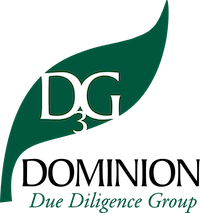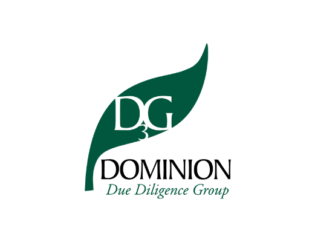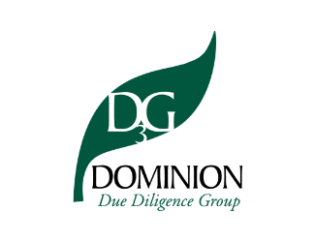
Phase II Q & A
Interview With the Expert: The Phase II Team with Ron James
 Ron James has been the Principal Geologist and the Technical Director of D3G’s Environmental Services Department since 2013. He is responsible for managing and coordinating his team of environmental project managers and technical staff to ensure their due diligence services and individual expertise meet clients' transaction and technical goals in a timely manner. Ron earned a B.S. in Engineering Geology from Radford University in 1994.
Ron James has been the Principal Geologist and the Technical Director of D3G’s Environmental Services Department since 2013. He is responsible for managing and coordinating his team of environmental project managers and technical staff to ensure their due diligence services and individual expertise meet clients' transaction and technical goals in a timely manner. Ron earned a B.S. in Engineering Geology from Radford University in 1994.
Q: Can you discuss the ability of the Phase II team to follow through on any contamination concerns by our environmental department?
A: Phase II’s primary directive is to evaluate and investigate Recognized Environmental Conditions (RECs) discovered by our Phase I team through the performance of a Phase II Environmental Site Assessment (ESA). Usually, a Phase II ESA is typically one of the last steps in the process before our clients close on a financial transaction.
Each project has a unique set of challenges. Navigating complex environmental projects through HUD’s Multifamily Accelerated Processing (MAP) Guide can be difficult for many consultants causing project deterioration, rejection, and recovery. Operating nationwide, our team is very familiar with how regulatory state agencies respond to contamination within each jurisdiction. Different regulations can add a layer of complexity to our goal of meeting clients' deadlines and deliverables. Working closely with my department staff, our Phase I environmental team, and our network of contacts, we guide our clients through these complicated situations.
Q: How is Phase II work impactful in the real world?
A: It's very impactful due to evaluating both exposure and financial risk. Certain compounds of concern have acute and chronic exposure thresholds. We have to evaluate that risk through four exposure pathways:
- One, the source of contamination.
- Two, the mechanism of transport.
- Three, the point of contact.
- And four, the route into the body.
A component of a Phase II ESA is evaluating potential dangers to people (receptors) where some exposure to chemical contaminants in soil, groundwater, ambient air, or soil vapor. A risk assessment can range from a simple screening level comparison to complex modeling for exposure scenarios determining site-specific environmental remedial objectives.
We utilize risk assessment modeling to determine risk exposures through federal and/or state jurisdictional screening criteria. If thresholds are exceeded, we devise a remedial approach, typically through mitigation, institutional, and engineering controls.
Q: What is the added value of Phase II beyond HUD-focused work?
A: Beyond HUD, we're currently working on one of the largest and oldest VDEQ Pollutant Complaint (PC) petroleum release/remediation sites in the Hampton Roads area of Virginia (non-HUD-related) in the Tidewater Regional Office (TRO) of the Virginia Department of Environmental Quality (VDEQ). That means we're doing something right!
Many projects we work on start as HUD projects but end up seeking financing elsewhere.
Our numerous licensure and certifications held across the U.S. enable regulatory investigation, closure, and oversight, including non-HUD-related remediation projects.
Many projects we work on start as HUD projects but end up seeking financing elsewhere. We are flexible and can adjust our reports to our client’s financing needs thanks to our understanding and experienced staff.
Q: Can you share a bit more about Phase II timing?
A: Timing is typically the most critical aspect of the Phase II process here at D3G. A Phase II ESA is typically one of the last tasks in a project with extreme timing constraints for client and stakeholder deliverables.
We have to mobilize on a site quickly in order to deliver our findings as soon as the site can accommodate us.
Our D3G technical staff is empowered with the resources to gauge the situation, plan for success and lead the development team to achieve a fruitful conclusion for the project.
The issues discovered for each project requiring recovery may be different. Our role is to assist stakeholders in determining what can be delivered with good guidance, skill, and knowledge; and how the project can be retrieved to deliver the original or adjusted business benefits under extreme timing constraints. Our D3G technical staff is empowered with the resources to gauge the situation, plan for success and lead the development team to achieve a fruitful conclusion for the project.
We understand the importance of delivery quickly and on time. Over the years, D3G has excelled at this process through a vast network of subcontractor and regulatory relationships across the U.S., further enabling a project’s success.
Q: How did you find yourself on this career path?
A: As a high school graduate, I initially planned on being a veterinarian. However, I quickly discovered that I was highly allergic to feline hair follicles. My advisor told me to explore other majors then and/or consider being a Livestock Veterinarian. During my initial pathway as a young student, I was taking a Geology 101 class as an elective. As a young child, I'd always been a rockhound. I loved playing with rocks, and I had a massive rock collection. My curiosity about the planet that we live on and science further developed in college. Consequently, my exposure to earth science eventually led me to evolve a passion for this field of study. So, I changed my major and career path to geology; the rest is geological history!
Follow D3G for more industry updates.
Learn more about how D3G helps improve multi-family housing.



